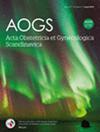Retained versus removed copper intrauterine device during pregnancy: An updated systematic review and meta-analysis
Abstract
Introduction
Intrauterine devices (IUDs) are highly effective contraceptives. Despite their effectiveness, pregnancies can occur during IUD use, and the management of such cases, particularly when the pregnancy is desired, remains controversial.
Material and Methods
We conducted a systematic review and meta-analysis to evaluate outcomes in women who unintentionally conceived while using IUDs and chose to continue their pregnancies. We searched PubMed, Embase, and Cochrane databases to identify studies comparing women who removed their IUD after pregnancy discovery to those who retained it. The primary outcomes assessed were miscarriage, bleeding during pregnancy, and preterm delivery. Secondary outcomes included cesarean delivery, chorioamnionitis, congenital malformations, intrauterine growth restriction, preterm premature rupture of membranes, and stillbirth. Odds ratios (ORs) with 95% confidence intervals (CIs) were calculated for the binary outcomes using random-effects models to account for variability across studies. The certainty of evidence was measured using the Grading of Recommendations Assessment, Development, and Evaluation approach.
Results
From 3719 records, 4 cohorts were included. Among the 693 pregnant women analyzed, 402 had their IUD removed, while 291 retained the device. The analysis focused on copper IUDs, with most studies reporting removal during the first trimester and after ultrasound evaluation, although gaps in standardized reporting practices and removal methods were noted. Significant benefits were observed for the IUD-removed group, including reduced incidences of bleeding during gestation (OR 0.42; 95% CI 0.24 to 0.73; p < 0.01. Moderate certainty of evidence), and miscarriage (OR 0.29; 95% CI 0.17 to 0.48; p < 0.01. Moderate certainty of evidence). There was no significant difference in preterm delivery rates (OR 0.78; 95% CI 0.34 to 1.76; p = 0.55).
Conclusions
This meta-analysis, based on data from cohort studies with moderate certainty of evidence, indicates that removing an IUD after pregnancy diagnosis may reduce the odds of miscarriage and bleeding during gestation. However, further high-quality research is needed to evaluate outcomes in pregnancies associated with hormonal IUDs, as well as critical factors such as gestational age at diagnosis, timing of IUD removal, and the position of the gestational sac relative to the device.


 求助内容:
求助内容: 应助结果提醒方式:
应助结果提醒方式:


